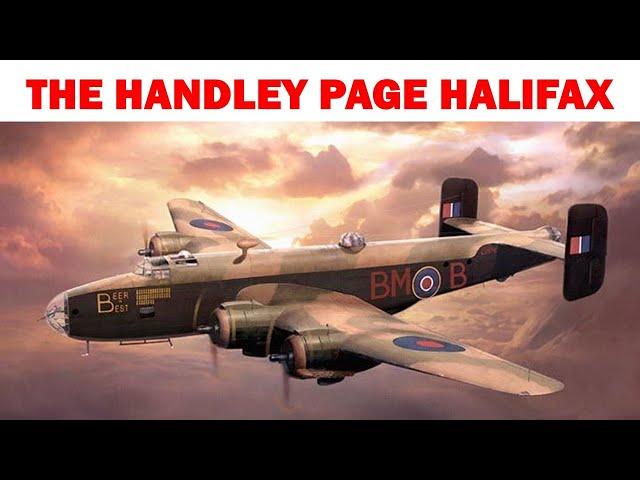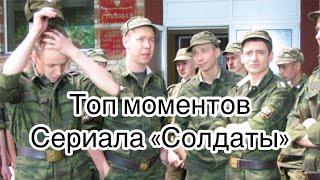Комментарии:

The radial engine Halifax variants are really good looking aircraft.
Somehow the Merlin engined ones just don't look quite right.

Interesting last comment about the odds of surviving after being shot down in a Halifax were slightly better than in a Lancaster. According to a quick check, this is because the layout and positioning of escape hatches in a Halifax made it marginally easier/faster to exit the plane. Given that the Halifax was a bit slower and saw action in more 'dangerous' skies for a year before the Lancaster came into service, there were relatively more of these quick bale-outs needed.
Ответить
My dear friend Ken Wright flew ops on Halifaxes late in the war. He passed away recently at age 100. There were giants in the earth!!! Great video!
Ответить
It would have been useful if the visuals had been better syncronised with the narrative.
Ответить
Thanks again for an interesting, informative video.
Ответить
Why was the Lancaster better than the Halifax?
Ответить
Interesting video, genuinely informative
Ответить
Great video. Thank you
Ответить
Yeah. The Lancaster's definitely benefited from their later development. There was a lot learned with the earlier aircraft.
You look at some of the Allied Bombers and they were developed much earlier. The B-17 first flew in July of 1935 and the Wellington first flew in June of 1936. Lancaster's first flew in Jan. of '41. There was a lot learned in those years and of course more learned as the war went on.
One of the things about the P-51 - is it's later development. Look at all the numbers between 38 and 51. Each of those numbers was an aircraft model which may or may not have amounted to anything. There was a lot of improvement in ergonomics with the P-51 over the pre-war P-38 which made the 51 a much easier plane to fly. In he hands of an experienced pilot - the 38 was phenomenal - but - you needed an experienced pilot to do all the things it could do.
The thing is with these later developments - someone had to carry the load to begin with.
Wellingtons and B-17's did tremendous service early on as did a number of other early war aircraft.
The Japanese - in the New Guinea and Solomon's Campaigns were defeated by pilots flying F4F's and P-40's.
By the time the P-51's and Hellcats were available - a lot of the highly experienced pilots the Germans and Japanese had had - were dead.
The Americans and British were the only ones that actually conducted Strategic Bombing Campaigns and they had to start with something.
.

Robo voice not great
Ответить
I will say what I like about the Halifax.
I will say it is a very handsome aircraft.

Anouther great video. Thanks.
Ответить
In July 1937 the Air Ministry instructed Handley Page to redesign the HP.56 into a 4-engine bomber as they had grave concerns that RR woukd not becable to solve all the problems the Vulturexwas having and they didn't want two of the new medium bombers grounded due to engine issues.
Ответить
You have no idea the Air Ministry specifications work. The letter indicates the type of aircraft (in 1936 F for fighter, B for heavy bomber, and P stood for medium bomber), the first number indicates the number of the specification issues in a given year (indicated by the last number. So for the HP.56 the specification was P.13/36 which decodes as the 13th specification issued in 1936 and was for a medium bomber. Whenever a new specification was issued from that year's series. This happend in tge case of the B.9/38 (B now just standing for Bomber) for a medium bomber that used no aluminium alloys. After the mock-ups from Armstrong-Whitworth and Bristol had been inspected two new specifications were issued B.17/38 (for the Bristol designs) and B.18/38 (for the Armstrong-Whitworth design). As the decision to drop tge HP.56 from the P.13/36 programme was made in 1937, the new aircraft should have been give a specification from the 1937 series, but no one has any evidence for such a specification.
Ответить
The short distance beteen the wing leading edge and the low slung propeller also caused control issues.
Ответить
Thank you sir for producing this video
Ответить
Why the heavy use of B-17 fotoage at the near end of the video about the Halifax? The Halifax is another of those unsung hero's of WWII, over shadowed by the Lanc, just as the Hurricane is over shadowed by the Spitfire and the American B-24 Liberator is over shadowed by the over hyped B-17.
Good to see you covering an often over looked aircraft, but try not to use things like B-17 videos when talking about an RAF bomber.

My Grandfather was a navigator on these with coastal command in WW2. Thank you for the upload.
Ответить
It is strange how HP were able to uprate performance by deleting the useless front turret, but the Lanc stuck with the turret until the end; possibly because the RAF wanted to use the Lanc in daylight where the front turret would have been necessary. It is ironic that crews were more likely to be shot down in a Halifax than a Lanc, but more likely to escape the burning aircraft.
Ответить
I have often wondered whether the heavy bombers were over-manned. So the flight engineer was necessary.
Ответить
The guns on the later Halifaxes seemed more sensible than on the Lancasters. They replaced the front turret with a aerodynamic perspex blister with a hole for one machine gun. The mid upper turret maybe slowed the Halifax down, but at least it had four machine guns.
Ответить
The Hadley Page Halifax had a version Passannger aircraft called Halton because of RAF Halton.
Ответить
I saw the Handley Page, Halifax bomber on display at the Canadian Air Force Museum at Trenton, ON back in 2010. It is amazing how the workers there were able to rebuild it to how it looks almost "factory-fresh" today considering where it was originally found.
Ответить
1st Lieutenant Edward Dawson Kornegay, USAAF, joined the RCAF before Pearl Harbour and qualified as a pilot before being posted to England. After crewing up at 20 OTU, Lossiemouth (at which point my late father became his Wireless Operator) he became acquainted with the tired Merlin engined Halifax at 1663 HCU, Rufforth. Around this time, he was transferred to the USAAF but remained detached with the RAF at his request.
From Rufforth, the crew were posted to 640 Squadron at Leconfield, flying the Bristol engined Halifax III. They were to complete only 8 'Ops' although their baptism included Berlin and the ill fated Nuremburg raid. Head hunted by Hamish Mahaddie, they were posted to the Lancaster equipped 35 Squadron, Pathfinder Force, with which they completed a further 48 'Ops' before being screened.
Here's the thing though. Ed Kornegay rated the Halifax III as a better performer than the Lanc. It handled better and he preferred the Hercules to Merlins.

And yet 17 years after the RAF flattened Hamburg, the Beatles were playing there ... go figure!
Ответить
Cracking video may i add the Halifax might not of been as popular as the Lanc but it brought my old mate home raid after raid.
Ответить
Mark V was not just used on training, and met flights, etc, it was fully operational on front line bomber squadrons. Many of my Dad's 30 missions were on mark v, according to the squadron operational records and serial numbers of the aircraft used. Some were Mk ii. The main difference seems to have been the non- standard undercarriage.
Ответить
Bomber Harris didnt want it, nor the Shorts Stirling. He valued only Lancasters for their service ceiling, speed and bomb load.
Ответить
My uncle with the RCAF was rammed by a German night fighter while piloting his Halifax and somehow managed to crash land it in Soviet occupied Poland closer to the end of the war. The crew were "interned" by the Soviets . His wife and family did not know if he was dead or alive as he was listed as missing until he managed to get back to the west. His aircraft was named after his wife, "Barbie Mark III", as I suppose it was a Mark III Halifax.
Ответить
My Grandfather was groundcrew for these during the war.
Ответить
Some mindless Woke persons condemn Harris for his alleged mindless attacks on German cities.........................but the truth is otherwise!!!!!!!!!!!!!!!!!!!!!!!!!!
In the course of the war - Nazis STRIPPED THEIR ARMY OF ARTILLERY SUPPORT in order to defend against the British bomber offensive.........................
a total of 19,500 HEAVY GUNS - meaning 88mm, 105 mm, 150 mm and 210 mm were sent back to Germany to used for antiaircraft defence!!!!!!!!!!!!!!!!!!!!!!!
This number DOES NOT take into account the hordes of smaller 40mm and 20mm guns that were also taken away from the army to defend Germany from air attacks................
in addition - over 900 of the BEST German twin engined bombers were
taken back to German to be fitted with radar and cannons as night fighters!!!!!!!!!!!!!!!!!!
In addition, all manner of heavy building equipment was sent back to Germany to try to keep German cities and factories functioning under the deluge of bombs - the destruction of German cities was so bad that the army commanders were over ruled as they begged to keep the guns and equipment - thus IN SPITE of the army need for the equipment to build and repair roads and bridges and supply lines and to construct gun pits and bunkers and to defend itself - etc the army LOST OUT!!!!!!!!!!!!!!
Thus the German army LOST its artillery edge, lost its front line anti aircraft defence, lost its air support, German army even lost its portable showers and its mobile field kitchens which were taken from the army and used to aid the stricken German public after air raids!!!!!!!!!!!!!!!!!!!!!!!!
Countless numbers of allied tank crews and soldiers survived the war thanks to Harris and the efforts of Bomber Command!!!!!!!!!!!!!!!!!!!!!!

From what the Luftwaffe has said of this aircraft and what Harris said, it must have been a lemon. I've seen a sample in Trenton, ON, Canada. The curators of this Luftwaffe victim chose to hide the single 20 mm cannon shell that brought it down - a disgrace.
Ответить
My dad flew in the Halifax Mk3. He applied to join the RAF in 1939 but was told to complete his electrical engineering apprenticeship first. He did his training in 1942 in Canada and qualifies with his wings (for 2nd pilot), radio op - navigator and bombardier. He began operations from early 1943 including European raids, glider, coastal and transport duties.
Ответить
The RAF had the best streregic bombers.
Ответить
Interesting how improved the Halifax was with development.
Ответить
My grandad flew as flight engineer on Halifax’s, mainly with coastal command in wales and stornoway. He did fly on a few raids on Essen and Bremen as well as a few others.
Ответить
Interesting video. For me, a little light on their role as glider transports and in SOE support missions, but that's a personal bias. Their role in the Far East was primarily to be in airborne assault and support, which the dropping of the bomb on Japan put an end to.
Ответить
Thanks for this. My father commanded a Halifax squadron from 1943 mostly bombing Germany at night but I hear little about the planes he flew. He said that out of 30 crews they would lose about 12 a month. He was 25 years old.
Ответить
So many good lives lost through rudder stall and many too, lost in determining the best shape of rudder from A, through E F G Modified C until finally D type.
Ответить
Love the Halifax
Ответить






![МЕТОДЫ УСТРАНЕНИЯ ЗАСТОЯ ЖЕЛЧИ. [Шишова О.И.] МЕТОДЫ УСТРАНЕНИЯ ЗАСТОЯ ЖЕЛЧИ. [Шишова О.И.]](https://smotrel.cc/img/upload/c3A1RlNmb0pkZko.jpg)



















